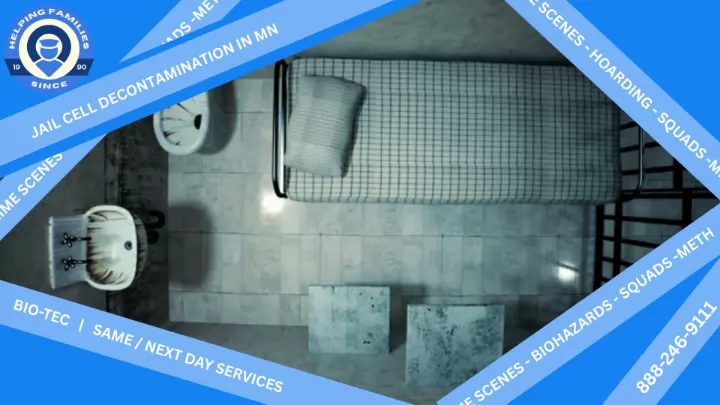What equipment is used in professional blood cleanup?
Professionals use personal protective equipment (PPE), industrial-grade disinfectants, biohazard waste containers, and specialized cleaning tools. These ensure thorough decontamination and safe disposal of hazardous materials.
What is the process of crime scene analysis before cleanup?
A thorough assessment is performed to identify hazards, document the scene, and develop a comprehensive remediation plan.
How do hazard communication standards apply to crime scene remediation?
These standards ensure that workers are fully informed about potential hazards and the proper procedures for safe cleanup operations.
Do companies offer 24/7 emergency response for biohazard incidents?
Yes, many providers offer round-the-clock emergency services to swiftly respond to contamination events.
What happens if contaminated items are accidentally left in the vehicle overnight?
The vehicle undergoes deep cleaning to remove potential pathogens and odors.
What are the best products for decomposition odor removal?
For professional-grade decomposition odor removal, a combination of specialized products is often required, moving beyond typical household cleaners. Enzymatic cleaners are paramount for initial cleanup, as they contain enzymes that break down organic matter, effectively eliminating the source of the odor. Brands like BioKleen Bac-Out or professional enzyme digesters are highly effective. For surface cleaning, hospital-grade disinfectants with strong virucidal and bactericidal properties are essential to not only clean but also sanitize the area, preventing the growth of odor-causing microorganisms. After initial cleaning, odor neutralizers are crucial. These products dont just mask odors but chemically alter or encapsulate the odor molecules. Look for industrial-strength formulations. For pervasive airborne odors, ozone generators are incredibly effective as they produce ozone (O3), which oxidizes and destroys odor molecules. However, these must be used with extreme caution in unoccupied spaces due to ozones respiratory hazards. Hydroxyl generators offer a safer alternative for occupied spaces, as they produce hydroxyl radicals that mimic natural outdoor deodorization processes. Activated charcoal can be used in bowls or sachets to absorb residual odors in the air. For odors absorbed into porous materials like subflooring or drywall, professional-grade encapsulation primers or sealers are often applied after cleaning and before new finishes to prevent the odor from off-gassing into the air. Companies like Kilz offer heavy-duty odor-blocking primers. The key is to select products specifically designed for biohazard and decomposition odors, as regular air fresheners or deodorizers will only provide temporary masking.
What is HEPA vacuuming, and why is it used in cleanup?
HEPA vacuums capture tiny particles and prevent them from becoming airborne, ensuring thorough decontamination.
What is done if a detainee contaminates the vehicle with infectious blood?
The vehicle undergoes immediate decontamination to remove all bloodborne pathogens.
What cleaning measures are taken after a crime scene transport?
Specialized cleaning agents and techniques are used to sanitize the vehicle thoroughly.
What happens when biohazards are spread to vehicle-mounted weapon racks?
Weapon racks are sanitized thoroughly to ensure safety and functionality.
